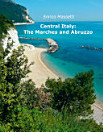Mantua: Art City
Acerca deste livro eletrónico
A few kilometers from Mantova, we can admire the beautiful Sanctuary of the Beata Vergine alle Grazie, the Benedictine Abbey of Polirone, in San Benedetto Po, the small village parishes, and the old courts. Mirage in the fertile countryside is Sabbioneta, the "small Athens" of Vespasiano Gonzaga.
Mantova history
According to legend, the town was founded by the soothsayer Manto when he fled from Thebes; Mantua enters history with the Etruscans. It goes from Roman rule to the barbarian invasions until around 1000 A.D. it becomes part of the feudal dominions of the Canossa.
It becomes a free commune in the XII and XIII centuries, continuing to grow while the unhealthy marsh by which it is surrounded is drained and reclaimed. In 1237 Pinamonte Bonacolsi came to power and consolidated its economic prosperity until 1328 when control passes to Luigi Gonzaga, founder of the dynasty to which Mantua owes most of its artistic beauty. In fact, under Gonzaga's rule, Mantua becomes notably more critical politically, enjoys economic prosperity, and is acknowledged as a primary center of culture and Renaissance art. The family residence soon becomes one of the largest and most magnificent palaces in Europe.
This is a guide to the art city of Mantua for a visit lasting one, two, three, or more days.
Includes a visit to the towns of Sabbioneta and Castellaro Lagusello, and a description of the Flora and Fauna of Mantua Lakes.
There are extensive descriptions and photos of the attractions: museums, churches, piazzas.
There are descriptions of how to get to Mantua by train, driving, or flying to the city.
The guide is divided into sections covering short visits to the "must-see" attractions and an itinerary for a multi-day complete stop to all the attractions available.
Acerca do autor
Enrico Massetti was born in Milano. Now he lives in Washington DC, USA, but he regularly visits his hometown and enjoys going around all the places in his home country.
You can reach Enrico at [email protected].








